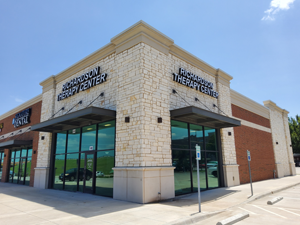A herniated disc refers to a condition in which one of the discs between the vertebrae of the spine becomes displaced or ruptured. This can cause severe pain, as well as numbness, tingling, and muscular weakness. Fortunately, physical therapy is an effective treatment for herniated discs. Let’s take a closer look at how physical therapy works for this condition.
The Goals of Physical Therapy Treatment for Herniated Discs
The goal of physical therapy treatment for herniated discs is to reduce pain and improve mobility. During physical therapy sessions, your therapist will work with you to develop a personalized treatment plan that takes into account your individual needs and goals. Your physical therapist will also help you understand what activities may aggravate your symptoms and which ones might be beneficial in managing them.
Physical Therapies Used for Herniated Discs
Your physical therapist may use a variety of techniques when treating your herniated disc. These methods may include soft tissue mobilization, stretching exercises, postural training, core strengthening exercises, and manual manipulation (such as spinal traction). Depending on the severity of your condition and other factors (such as age), your therapist may also recommend lifestyle modifications that could help reduce pain and improve function over time.
Benefits of Physical Therapy for Herniated Discs
Physical therapy has been proven to be an effective treatment option for herniated discs. It can provide relief from painful symptoms while allowing you to regain strength and mobility. With physical therapy, you can learn how to manage your condition more effectively so that you can continue to lead an active lifestyle without worrying about pain or discomfort. In addition, regular exercise can also help prevent further episodes of herniation in the future by helping to strengthen the back muscles that support the spine.
Physical therapy is an important part of treatment for individuals suffering from a herniated disc. By working closely with your physical therapist, you can develop an individualized treatment plan that focuses on reducing pain and improving mobility while providing long-term benefits such as improved posture, strength, balance and overall quality of life. If you’ve been diagnosed with a herniated disc or are experiencing any associated symptoms like pain or numbness/tingling sensations in the back or legs—consult with a qualified physical therapist today! They can help create a plan tailored specifically to your needs so that you can enjoy living life without being limited by your diagnosis!
Richardson Therapy Center
Contact Us Directly: 972-250-5690
 2040 E. Pres. George Bush Hwy Suite. 100
2040 E. Pres. George Bush Hwy Suite. 100
Richardson, TX 75082
Phone: 972-250-5690
Fax: 844-250-2431
Hours: Monday-Thursday 7 a.m. – 7 p.m.
Friday 7 a.m. – 5 p.m.
